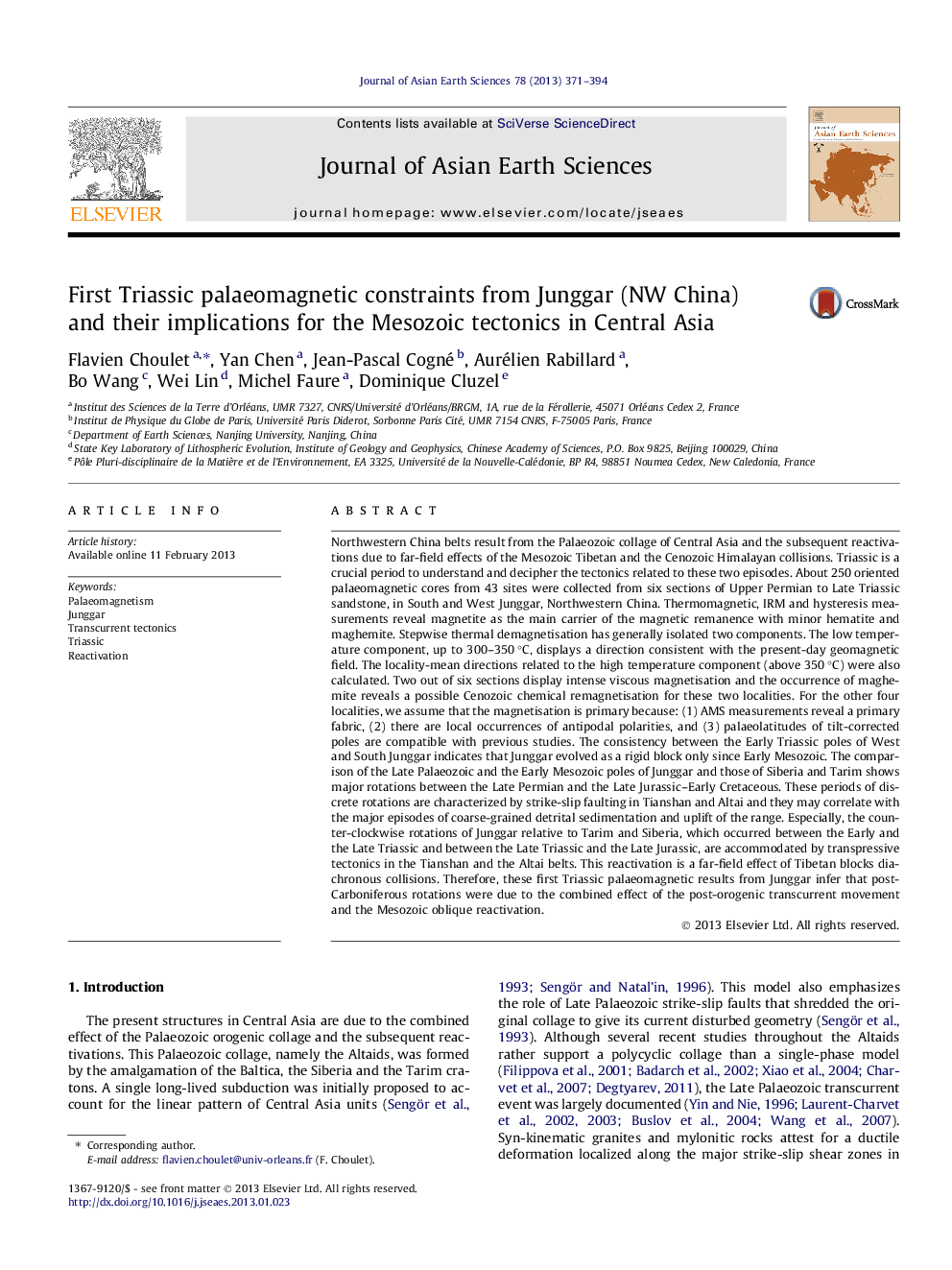| کد مقاله | کد نشریه | سال انتشار | مقاله انگلیسی | نسخه تمام متن |
|---|---|---|---|---|
| 4730855 | 1640389 | 2013 | 24 صفحه PDF | دانلود رایگان |

Northwestern China belts result from the Palaeozoic collage of Central Asia and the subsequent reactivations due to far-field effects of the Mesozoic Tibetan and the Cenozoic Himalayan collisions. Triassic is a crucial period to understand and decipher the tectonics related to these two episodes. About 250 oriented palaeomagnetic cores from 43 sites were collected from six sections of Upper Permian to Late Triassic sandstone, in South and West Junggar, Northwestern China. Thermomagnetic, IRM and hysteresis measurements reveal magnetite as the main carrier of the magnetic remanence with minor hematite and maghemite. Stepwise thermal demagnetisation has generally isolated two components. The low temperature component, up to 300–350 °C, displays a direction consistent with the present-day geomagnetic field. The locality-mean directions related to the high temperature component (above 350 °C) were also calculated. Two out of six sections display intense viscous magnetisation and the occurrence of maghemite reveals a possible Cenozoic chemical remagnetisation for these two localities. For the other four localities, we assume that the magnetisation is primary because: (1) AMS measurements reveal a primary fabric, (2) there are local occurrences of antipodal polarities, and (3) palaeolatitudes of tilt-corrected poles are compatible with previous studies. The consistency between the Early Triassic poles of West and South Junggar indicates that Junggar evolved as a rigid block only since Early Mesozoic. The comparison of the Late Palaeozoic and the Early Mesozoic poles of Junggar and those of Siberia and Tarim shows major rotations between the Late Permian and the Late Jurassic–Early Cretaceous. These periods of discrete rotations are characterized by strike-slip faulting in Tianshan and Altai and they may correlate with the major episodes of coarse-grained detrital sedimentation and uplift of the range. Especially, the counter-clockwise rotations of Junggar relative to Tarim and Siberia, which occurred between the Early and the Late Triassic and between the Late Triassic and the Late Jurassic, are accommodated by transpressive tectonics in the Tianshan and the Altai belts. This reactivation is a far-field effect of Tibetan blocks diachronous collisions. Therefore, these first Triassic palaeomagnetic results from Junggar infer that post-Carboniferous rotations were due to the combined effect of the post-orogenic transcurrent movement and the Mesozoic oblique reactivation.
► We investigated six Permian and Triassic sections in West and South Junggar.
► Primary and secondary magnetisations are isolated from sedimentary rocks.
► New palaeomagnetic poles indicate welding of the Junggar block during Late Triassic.
► Significant Mesozoic rotations occur between Junggar, Tarim and Siberia.
► Displacements along strike-slips fault can explain these relative rotations.
Journal: Journal of Asian Earth Sciences - Volume 78, 15 December 2013, Pages 371–394